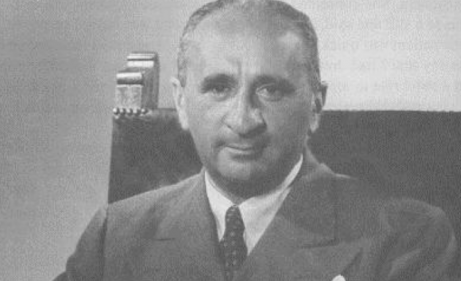Sandor Radó, an Expert in Addiction

While Sandor Radó is remembered as one of the pioneers of psychoanalysis, he was also influential in bringing about great reforms in the field. Known as a skilled debater, he was intellectually brilliant. This, along with his keen argumentative skills, gave him great notoriety, both within the world of psychoanalysis and the public.
Other, less remarkable aspects of his personality also became well-known. He was a lover of fine food, and a prolific lady’s man, with a desire to win over any woman that crossed his path. This, coupled with his exaggerated theses on phallocentrism, earned him a reputation as a misogynist. In any case, he wasn’t exactly what you’d call a feminist.
For all these reasons and more, Sandor Radó had an intense and long-lasting feud with fellow psychoanalyst Karen Horney. And, although he was one of Freud’s most avid followers at first, he set off on a new path, distancing himself from classical psychoanalysis.
Sandor Radó, a remarkable student
Sandor Radó was born in Hungary in 1890. At first, he had his sights set on a career in law and obtained a degree in political science in 1911. Later, against his father’s wishes, he decided to study medicine. This was his great passion from an early age, as he had taken a huge interest in natural sciences. He received his doctorate in 1915.
By that time, he’d already had his first taste of the world of psychoanalysis. When he was 19 years old, he came across the writings of Sándor Ferenczi, and was blown away by what he read. Thereafter, he began to develop an interest in the work of Sigmund Freud. He even went to Vienna to attend a lecture by the father of psychoanalysis. He later forged a close friendship with Freud, which lasted more than 15 years.
In Hungary, he founded the Hungarian Psychoanalytic Association with Ferenczi. He was then analyzed by Erzsebet Revesz, who had, in turn, been psychoanalyzed by Freud. By then, Sandor Radó was married. However, in the course of the process, he fell in love with his analyst, which led him to divorce his first wife and marry her.

The psychoanalytic movement
In 1922, Sandor Radó moved to Berlin. There, he underwent a second psychoanalysis, this time performed by Karl Abraham. He was soon invited to join the Berlin Psychoanalytic Institute. In 1924, he was asked to be the editor of the International Review of Psychoanalysis (International Zeitschrift Für Psicoloanalyse) by Sigmund Freud himself. Three years later, he also became the editor of the famous Imago journal.
During his time in Berlin, he also took on the role of training new psychoanalysts. Important figures such as Wilhelm Reich, Otto Fenichel, and Heinz Hartmann did didactic psychoanalyses with him. At that time, however, Radó was experiencing great difficulties in his personal life. His wife, who was six months pregnant at the time, developed pernicious anemia. She decided to have a cesarean section and died two days later. Her baby also died a week later.
After this tragic event, Sandor Radó had a tempestuous, short-lived relationship with psychoanalyst Helene Deutsch. He later fell in love with and married one of his patients, a woman named Emmy Krissler. As a result, he’s often said to have committed some of the most flagrant transgressions in the field of psychoanalysis, marrying both his analyst and his patient.
Sandor Radó walked a different path
In 1931, Sandor Radó settled in the United States, at the invitation of Abraham Arden Brill. Together, the two set up the Institute of the Psychoanalytic Society of New York, acting as a counterpart for the institute Radó had already set up in Berlin. When the Nazis came to power, Radó played an active role in helping his colleagues emigrate to the United States.

At this stage, he began to distance himself from classical psychoanalysis. He supported the idea of integrating the fields of medicine and psychoanalysis and began attributing greater importance to biological phenomena than the experiences of the unconscious. He also developed an interest in the study of addiction, and soon became one of the greatest authorities on the subject.
Eventually, he adopted behavioral principles, with emotional re-education at the heart of his treatment methods. In 1942, he created the Association for Psychoanalytic Medicine. Later, he founded the New York School of Psychiatry, an institution that wasn’t very related to field of psychoanalysis. At the time of his death in 1972, he was known as one of the most famous psychiatrists in the United States.
All cited sources were thoroughly reviewed by our team to ensure their quality, reliability, currency, and validity. The bibliography of this article was considered reliable and of academic or scientific accuracy.
Alexander, F. (1968). Sandor Rado, la teoría adaptativa. Historia del psicoanálisis.
This text is provided for informational purposes only and does not replace consultation with a professional. If in doubt, consult your specialist.








